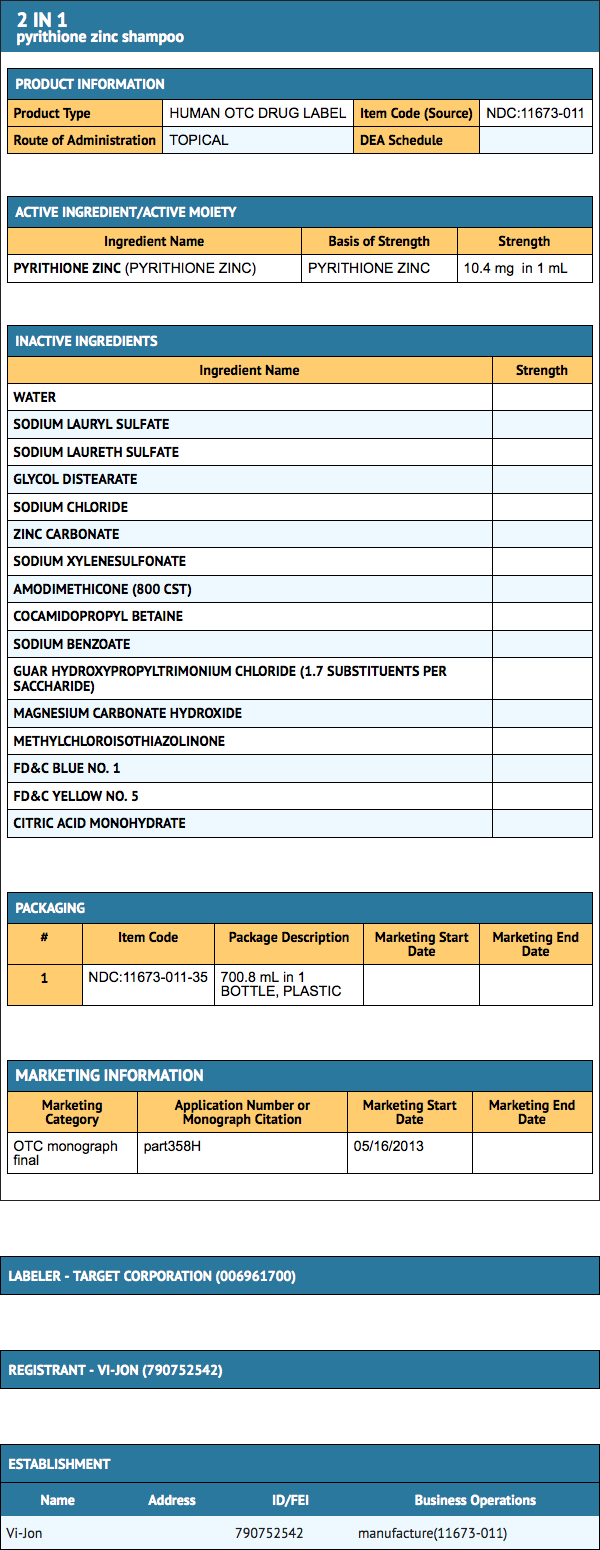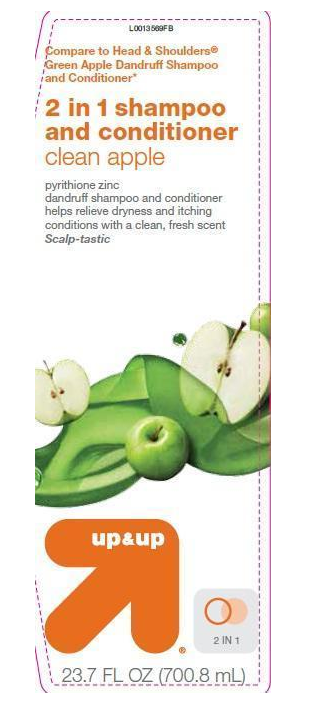Zinc pyrithione
Editor-In-Chief: C. Michael Gibson, M.S., M.D. [1]; Associate Editor(s)-in-Chief: Alberto Plate [2]
Disclaimer
WikiDoc MAKES NO GUARANTEE OF VALIDITY. WikiDoc is not a professional health care provider, nor is it a suitable replacement for a licensed healthcare provider. WikiDoc is intended to be an educational tool, not a tool for any form of healthcare delivery. The educational content on WikiDoc drug pages is based upon the FDA package insert, National Library of Medicine content and practice guidelines / consensus statements. WikiDoc does not promote the administration of any medication or device that is not consistent with its labeling. Please read our full disclaimer here.
NOTE: Most over the counter (OTC) are not reviewed and approved by the FDA. However, they may be marketed if they comply with applicable regulations and policies. FDA has not evaluated whether this product complies.
Overview
Zinc pyrithione is an shampoo that is FDA approved for the prophylaxis of flaking and itching recurrence associated with dandruff. Common adverse reactions include {{{adverseReactions}}}.
Adult Indications and Dosage
FDA-Labeled Indications and Dosage (Adult)
Use Directions
- 1.- Wet hair
- 2.- Squeeze small amount into palm
- 3.- Lather
- 4.- Rinse well
Off-Label Use and Dosage (Adult)
Guideline-Supported Use
There is limited information regarding Off-Label Guideline-Supported Use of Zinc pyrithione in adult patients.
Non–Guideline-Supported Use
There is limited information regarding Off-Label Non–Guideline-Supported Use of Zinc pyrithione in adult patients.
Pediatric Indications and Dosage
FDA-Labeled Indications and Dosage (Pediatric)
Use Directions
- 1.- Wet hair
- 2.- Squeeze small amount into palm
- 3.- Lather
- 4.- Rinse well
Off-Label Use and Dosage (Pediatric)
Guideline-Supported Use
There is limited information regarding Off-Label Guideline-Supported Use of Zinc pyrithione in pediatric patients.
Non–Guideline-Supported Use
There is limited information regarding Off-Label Non–Guideline-Supported Use of Zinc pyrithione in pediatric patients.
Contraindications
There is limited information regarding Zinc pyrithione Contraindications in the drug label.
Warnings
- For external use only.
- Keep this and all drugs out of reach of children If swallowed get medical help or contact a Poison Control Center right away.
- Stop use and ask a doctor if condition does not improve or worsen after regular use of this product as directed
- When using this product, avoid contact with eyes. If contact occurs, rinse eyes with plenty of water.
Adverse Reactions
Clinical Trials Experience
There is limited information regarding Zinc pyrithione Clinical Trials Experience in the drug label.
Postmarketing Experience
There is limited information regarding Zinc pyrithione Postmarketing Experience in the drug label.
Drug Interactions
There is limited information regarding Zinc pyrithione Drug Interactions in the drug label.
Use in Specific Populations
Pregnancy
Pregnancy Category (FDA):
There is no FDA guidance on usage of Zinc pyrithione in women who are pregnant.
Pregnancy Category (AUS):
There is no Australian Drug Evaluation Committee (ADEC) guidance on usage of Zinc pyrithione in women who are pregnant.
Labor and Delivery
There is no FDA guidance on use of Zinc pyrithione during labor and delivery.
Nursing Mothers
There is no FDA guidance on the use of Zinc pyrithione in women who are nursing.
Pediatric Use
There is no FDA guidance on the use of Zinc pyrithione in pediatric settings.
Geriatic Use
There is no FDA guidance on the use of Zinc pyrithione in geriatric settings.
Gender
There is no FDA guidance on the use of Zinc pyrithione with respect to specific gender populations.
Race
There is no FDA guidance on the use of Zinc pyrithione with respect to specific racial populations.
Renal Impairment
There is no FDA guidance on the use of Zinc pyrithione in patients with renal impairment.
Hepatic Impairment
There is no FDA guidance on the use of Zinc pyrithione in patients with hepatic impairment.
Females of Reproductive Potential and Males
There is no FDA guidance on the use of Zinc pyrithione in women of reproductive potentials and males.
Immunocompromised Patients
There is no FDA guidance one the use of Zinc pyrithione in patients who are immunocompromised.
Administration and Monitoring
Administration
There is limited information regarding Zinc pyrithione Administration in the drug label.
Monitoring
There is limited information regarding Zinc pyrithione Monitoring in the drug label.
IV Compatibility
There is limited information regarding the compatibility of Zinc pyrithione and IV administrations.
Overdosage
There is limited information regarding Zinc pyrithione overdosage. If you suspect drug poisoning or overdose, please contact the National Poison Help hotline (1-800-222-1222) immediately.
Pharmacology

Mechanism of Action
There is limited information regarding Zinc pyrithione Mechanism of Action in the drug label.
Structure
There is limited information regarding Zinc pyrithione Structure in the drug label.
Pharmacodynamics
There is limited information regarding Zinc pyrithione Pharmacodynamics in the drug label.
Pharmacokinetics
There is limited information regarding Zinc pyrithione Pharmacokinetics in the drug label.
Nonclinical Toxicology
There is limited information regarding Zinc pyrithione Nonclinical Toxicology in the drug label.
Clinical Studies
There is limited information regarding Zinc pyrithione Clinical Studies in the drug label.
How Supplied
There is limited information regarding Zinc pyrithione How Supplied in the drug label.
Storage
There is limited information regarding Zinc pyrithione Storage in the drug label.
Images
Drug Images
{{#ask: Page Name::Zinc pyrithione |?Pill Name |?Drug Name |?Pill Ingred |?Pill Imprint |?Pill Dosage |?Pill Color |?Pill Shape |?Pill Size (mm) |?Pill Scoring |?NDC |?Drug Author |format=template |template=DrugPageImages |mainlabel=- |sort=Pill Name }}
Package and Label Display Panel


{{#ask: Label Page::Zinc pyrithione |?Label Name |format=template |template=DrugLabelImages |mainlabel=- |sort=Label Page }}
Patient Counseling Information
There is limited information regarding Zinc pyrithione Patient Counseling Information in the drug label.
Precautions with Alcohol
Alcohol-Zinc pyrithione interaction has not been established. Talk to your doctor about the effects of taking alcohol with this medication.
Brand Names
There is limited information regarding Zinc pyrithione Brand Names in the drug label.
Look-Alike Drug Names
There is limited information regarding Zinc pyrithione Look-Alike Drug Names in the drug label.
Drug Shortage Status
Price
References
The contents of this FDA label are provided by the National Library of Medicine.
|
WikiDoc Resources for Zinc pyrithione |
|
Articles |
|---|
|
Most recent articles on Zinc pyrithione Most cited articles on Zinc pyrithione |
|
Media |
|
Powerpoint slides on Zinc pyrithione |
|
Evidence Based Medicine |
|
Clinical Trials |
|
Ongoing Trials on Zinc pyrithione at Clinical Trials.gov Trial results on Zinc pyrithione Clinical Trials on Zinc pyrithione at Google
|
|
Guidelines / Policies / Govt |
|
US National Guidelines Clearinghouse on Zinc pyrithione NICE Guidance on Zinc pyrithione
|
|
Books |
|
News |
|
Commentary |
|
Definitions |
|
Patient Resources / Community |
|
Patient resources on Zinc pyrithione Discussion groups on Zinc pyrithione Patient Handouts on Zinc pyrithione Directions to Hospitals Treating Zinc pyrithione Risk calculators and risk factors for Zinc pyrithione
|
|
Healthcare Provider Resources |
|
Causes & Risk Factors for Zinc pyrithione |
|
Continuing Medical Education (CME) |
|
International |
|
|
|
Business |
|
Experimental / Informatics |
Overview
Zinc pyrithione is chemical compound used as an antifungal and antibacterial agent. This coordination complex, which has many names, was first reported in the 1930s.[1][2] It features two pyridine-derived chelating ligands bound to zinc via oxygen and sulfur atoms.
Uses
Medical
Zinc pyrithione is best known for its use in treating dandruff and seborrheic dermatitis. It also has antibacterial properties and is effective against many pathogens from the streptococcus and staphylococcus class. Its other medical applications include treatments of psoriasis, eczema, ringworm, fungus, athletes foot, dry skin, atypical dermatitis, tinea, and vitiligo.
Zinc pyrithione is approved for over-the-counter topical use in the United States as a treatment for dandruff. It is the active ingredient in several anti-dandruff shampoos such as Head & Shoulders. However, in its industrial forms and strengths, it may be harmful by contact or ingestion.
In paint
Due to its low solubility in water (8 ppm at neutral pH), zinc pyrithione is suitable for use in outdoor paints and other products that provide protection against mildew and algae. It is an effective algaecide. It is chemically incompatible with paints relying on metal carboxylate curing agents. When used in latex paints and the water contains high amount of iron, a sequestering agent that will preferentially bind the iron ions is needed. Its decomposition by ultraviolet light is slow, providing years of protection even against direct sunlight.
Mechanism
Its antifungal effect most likely lies in the ability of an un-ionized pyrithione molecule to disrupt membrane transport by blocking the proton pump that energizes the transport mechanism.[3] Fungi are capable of inactivating pyrithione in low concentrations.
References
- ↑ "astate.edu". Retrieved 2007-08-24.
- ↑ "What is Skin Zinc?". Retrieved 2007-08-24.
- ↑ Chandler CJ, Segel IH (1978). "Mechanism of the antimicrobial action of pyrithione: effects on membrane transport, ATP levels, and protein synthesis". Antimicrob. Agents Chemother. 14 (1): 60–8. PMID 28693.